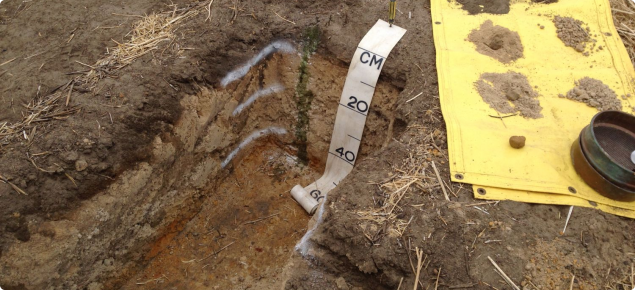Knowing your soils and plant available water is important
Growers can use a range of decision support tools to estimate potential crop yield, and make more informed decisions about fertiliser and other inputs if they know the plant available water capacity and soil-water content of their soils (Figure 1). These informed decisions can help identify profitable and unprofitable inputs.
What is plant available water capacity?
Plant available water capacity (PAWC) is the maximum amount of water stored in a soil profile that can be used by plants. Different soils have different PAWC values.
PAWC is the difference between the soil's water content at drained upper limit and the crop lower limit. The actual plant available water (PAW) – always between PAWC and crop lower limit – in a soil is influenced by properties of the plants, soil and weather conditions.
PAWC is measured in the soil profile to a depth of 1 metre for most plants, or to the maximum rooting depth. The bulk density, gravel content and texture of the soil are factors in calculating the plant available water capacity, as are constraints to root growth.
How to identify your soil and estimate plant available water capacity
Use information for your area
You can identify your soils using:
- MySoil, which categorises Western Australian soils into 15 broad groups based on similar PAWC, with common examples in your region.
- SoilMapp for iPad describes soils near you and provides information on a range of soil profile properties including PAWC.
- The APSoil database feeds into SoilMapp for iPad and crop modelling software such as the Agricultural Production Simulator (APSIM).
- Yield Prophet crop simulation and management tool is a modified version of APSIM that has been redesigned for agricultural consultants.
Use models that estimate plant available water from weather and soil information
PAW can be estimated by simulations using weather data and soil information.
Some examples:
- SoilWaterApp for the iPad estimates the plant available soil water using local soil information and weather data.
- CliMate summarises weather data and simulates soil water for bare soil which is useful between December and June. Plant available water maps are also published on several websites including the Australian Export Grain Innovation Centre (AEGIC) website, a CSIRO site and the DPIRD Seasonal climate information page.
- Rainfall to date on DPIRD's website is a good indicator of season progress and CliMate also offers rainfall charts.
- DPIRD's Weather stations online web page shows monitored weather stations.
Use direct measures of PAWC and soil-water measurements during the year
You can improve potential yield estimates from decision support tools by using direct measures, rather than generic values, of PAWC of soils on your property.
By measuring soil water during the season and knowing your soils' PAWC, you can make informed decisions about crop inputs and likely harvest yields during the growing season. Soil water can be measured with soil-water probes: see choosing a probe.
The West Midlands Group and other grower groups have added soil-water probes to weather stations to supply information about soil water during the year, as part of the collaborative eConnected Grainbelt project with DPIRD.
Some soil-water probe data is available on the Grains Research and Development Corporation moisture probes network on the Precision Agronomics website.
For more information
See the Grains Research and Development Corporation project Measuring and managing soil water in Australian agriculture.



